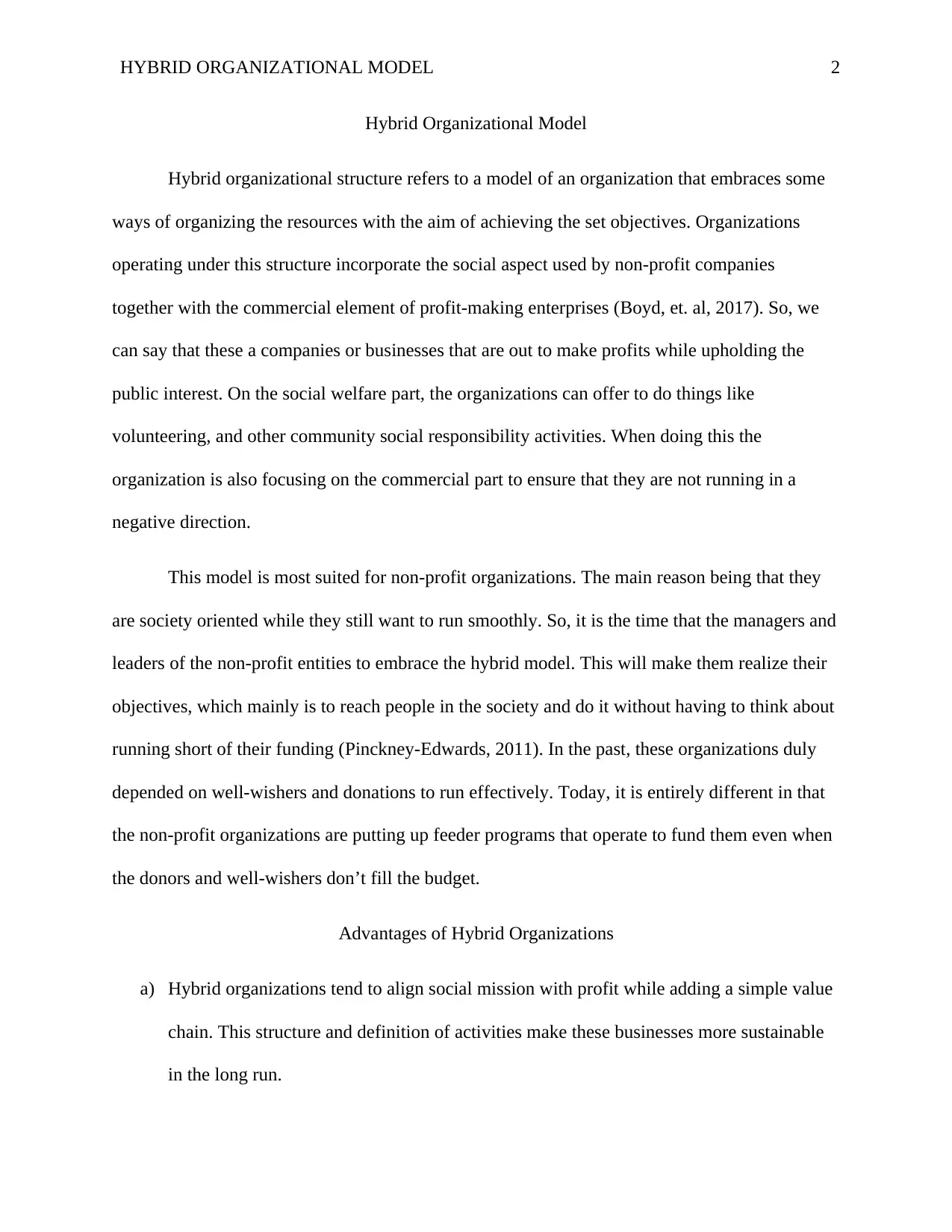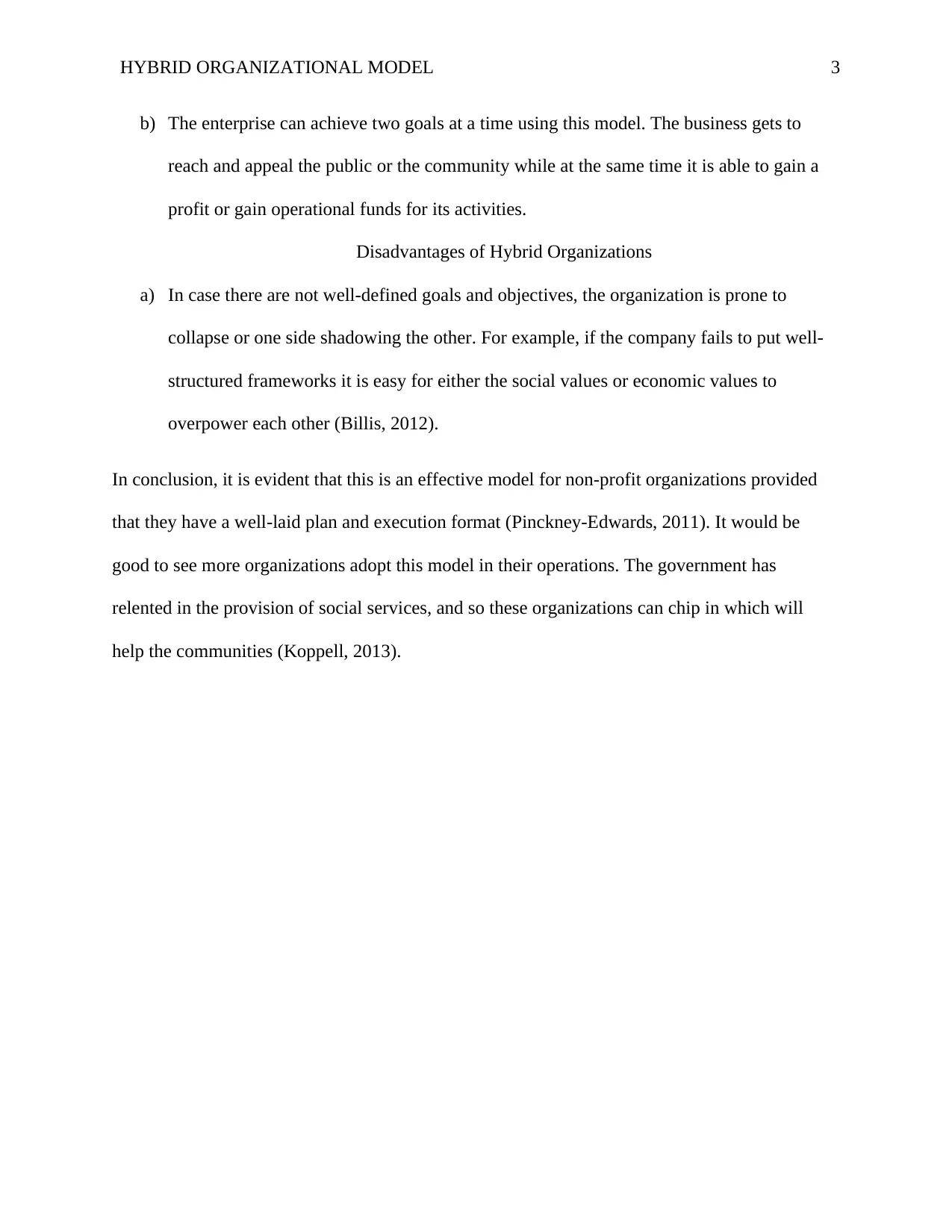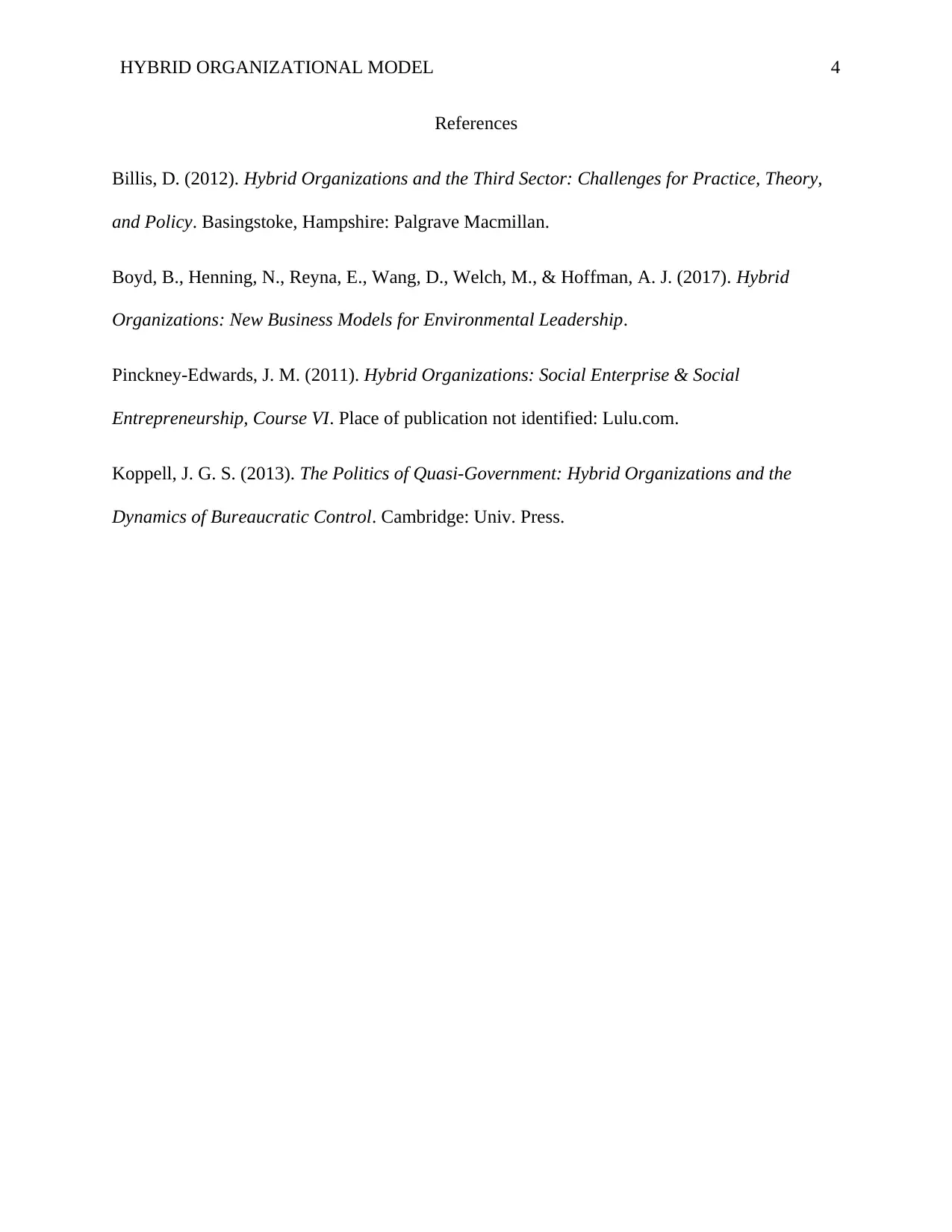Hybrid Organizational Model Analysis: A Business Development Report
VerifiedAdded on 2020/05/08
|4
|631
|98
Report
AI Summary
This report provides an analysis of the hybrid organizational model, a structure that combines aspects of both for-profit and non-profit organizations. It begins by defining the model and its relevance, particularly for non-profit entities, and then highlights its core advantages, such as aligning social missions with profit and creating a sustainable value chain. The report also addresses the disadvantages, such as the potential for conflicting goals if not properly managed. The conclusion emphasizes the importance of a well-defined plan and execution format for the successful implementation of the hybrid model. The author suggests that this model can be beneficial in the provision of social services and overall community development. References to key academic literature are also included.
1 out of 4











![[object Object]](/_next/static/media/star-bottom.7253800d.svg)